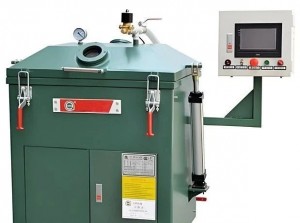[Impregnation] is a common process in the production of high-frequency transformers. Why do transformers need to be impregnated? What are the precautions for impregnation? Today, let’s talk about related topics.
[Impregnation] refers to placing the transformer in insulating oil (also called varnish), forming negative pressure by vacuuming, and filling the entire transformer gap with insulating oil.
At this time, the state inside the equipment is in a vacuum negative pressure state, so we also call this process vacuum impregnation. (Some small manufacturers use non-vacuum impregnation technology, the effect is relatively poor, and it is not mentioned here)
[Vacuum impregnation] The main purpose is to improve the insulation strength and moisture resistance of the transformer, as well as the heat resistance and heat dissipation performance of the transformer, and also to improve the mechanical properties, chemical stability, and aging delay performance of the transformer.
In addition, the insulating oil itself has a certain viscosity, which can strengthen the firmness of the combination of the magnetic core and the skeleton. For products with a size smaller than EE13, since the side column dispensing is not easy to operate, we often use the impregnation process instead of the dispensing process.
Generally, the insulating oil we use is melamine alkyd resin paint, and the solvent is toluene or xylene. Since toluene or xylene are harmful to the human body, some foreign manufacturers do not use impregnated transformers for environmental protection reasons.
At present, some transformer manufacturers in China have adjusted the formula to water-based solvents, and adjusted the proportion of insulating oil with water in proportion to reduce the damage of toxic solvents to people. However, the impregnation effect is slightly inferior to the traditional xylene solvent.
In terms of temperature resistance, insulating oils are E-grade (120°C), B-grade (130°C), F-grade (155°C), H-grade (180℃), and R-grade (200℃). Currently, B-grade and F-grade are commonly used.
It is worth noting that the transformer is prone to poor inductance after impregnation, so special attention should be paid during the manufacturing process:
1. Impregnation can easily lead to changes in air gap, which in turn leads to changes in inductance, so the transformer core assembly should be in place in the early stage;
2. Due to the large vacuum negative pressure during impregnation, if the core tape (steel clip) is not fixed tightly, it is easy to cause the core to be dislocated or moved, resulting in changes in inductance, so the core wrapping (steel clip) must be in place;
3. If there are foreign objects on the core assembly surface, the inductance will also change after impregnation; therefore, the core assembly must ensure that there are no foreign objects on the bonding surface;
4. It is necessary to select a reasonable baking temperature according to the characteristics of the insulating oil; some high-conductivity cores (filter products) have a low Curie temperature and are greatly affected by baking. Low-temperature drying at 80°C or natural drying can be used to avoid this effect
——————————
Zhongshan Xuan Ge Electronics Co., Ltd. has been engaged in production, research and development, and sales in the transformer industry for 15 years and has rich industry experience.
Xuan Ge Electronics specializes in export products and has established partnerships with major overseas companies. Welcome to join us!
Please contact us by email and tell us the product and model you need. We will give you the most satisfactory solution and the most favorable price.
William (General Sales Manager)
E-mail: sales@xuangedz.com
liwei202305@gmail.com
The article comes from the Internet and is for reference only
Post time: Sep-13-2024



